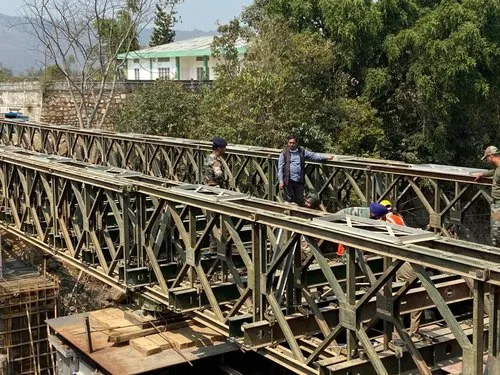In East Narsingbari, a village in Baksa district, residents have taken an unusual yet commendable step to address their infrastructure needs. Frustrated by years of government inaction, the locals pooled their resources to construct a pucca bridge. This bridge, which cost Rs 20 lakh, was entirely funded through local donations.
For years, the residents of Salbari constituency had been pleading for a bridge that would connect their village to nearby areas. Their appeals to the government and local authorities went unanswered. The absence of a proper bridge made travel difficult and unsafe, especially during the monsoon season. Villagers faced significant challenges moving essential supplies and accessing medical services.
The decision to build the bridge came after numerous unsuccessful attempts to get the government to act. As the situation grew increasingly dire, community leaders and residents decided to take matters into their own hands. They launched a fundraising campaign within the community, encouraging everyone to contribute whatever they could. The response was overwhelming, with residents, local businesses, and expatriates all contributing to the cause.
Construction began with a spirit of determination and self-reliance. The project, managed by a team of local volunteers and overseen by community leaders, was completed in a matter of months. The bridge now stands as a testament to the power of community action and collective effort.
The completion of the bridge has been met with immense relief and joy among the villagers. It has significantly improved connectivity, allowing for easier transportation of goods and access to services. Medical emergencies, which once posed serious risks due to travel delays, are now handled more efficiently.
Local leaders have expressed their frustration with the government, criticizing its failure to address the community’s needs over the years. They argue that the government should have acted sooner and point out that the residents had to step in only due to bureaucratic inertia and neglect.
The success of the community-led initiative has sparked discussions about the role of citizen action in improving local infrastructure. It raises questions about the efficiency and responsiveness of government projects and the need for better allocation of resources to underserved areas.
In response to the completed bridge, local officials have promised to look into the matter. They have acknowledged the community’s efforts and have pledged to ensure that such initiatives are supported in the future. However, the residents remain skeptical, having heard similar promises before.
The story of East Narsingbari’s bridge underscores a broader issue faced by many communities across India. It highlights the gaps in government services and the critical role of grassroots efforts in addressing local problems. As more communities take matters into their own hands, the hope is that this will prompt a reevaluation of how infrastructure projects are managed and prioritized.
For now, the residents of East Narsingbari celebrate their achievement, proud of what they have accomplished through sheer will and community spirit. Their new bridge stands as a symbol of their perseverance and a reminder of what can be achieved when a community comes together to solve its own problems.




